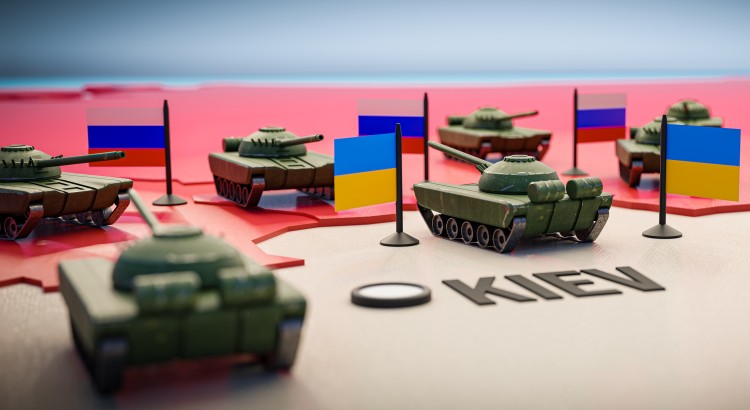
Werner’s Blog: How deep is Canada's trade relationship with Russia?

Countries around the world, including Canada, are rallying against Russia’s war on Ukraine by applying trade sanctions and other deterrents. But how much trade do we actually do with Russia? In this updated excerpt from his recent blog post, Werner Antweiler, Associate Professor & Chair, Strategy and Business Economics Division at UBC Sauder School of Business, sheds some light on this.
Russia has invaded Ukraine. This horrific act of warfare and unprovoked aggression has shaken the world. It is painful to watch the human tragedy unfold in Ukraine.
Here in Canada we are wondering how our trade links with Russia may be affected. What exactly are we trading with Russia? Could trade sanctions be used against Russia? And how vulnerable is Canada to potential retaliation?
Canada's trade with Russia is minuscule. The $2.14 billion worth of imports from Russia amount to 0.35 per cent of Canada's total imports, while the $0.66 billion worth of exports to Russia amount to just 0.10 per cent of Canada's total exports. Canada’s top imports from Russia are fertilizers, crude oil, and various metals and minerals. Canada’s top exports to Russia are industrial machinery and aircrafts.
Trade with Russia is too small in volume to matter much in the greater scheme of things. Yet, export controls will likely come into place to prevent any further exports of high-tech gear to Russia. Similarly, Canadian producers may decide to pivot to find alternative upstream suppliers for minerals and metals.
Russia's main exports are fossil fuels: oil and gas. Cutting off export revenue will require trade sanctions that prevent alternative routes of selling these fuels, in particular to China. The increasing price of oil over the course of the last year has already benefited Russia financially, allowing the country to bolster its foreign reserves. Oil and gas exports account for roughly three-fifths of Russia's export revenue. For trade sanctions to be effective, they will need to cut off a large part of that oil and gas revenue. Germany has already decided to pivot away from importing natural gas from Russia by accelerating construction of LNG import terminals.
While targeting Russia’s oligarchs with sanctions will perhaps undermine support for Putin in the long term, as my economist colleague Paul Krugman has recently argued in The New York Times, sanctions are unlikely to make Putin change course today. Some sanctions have a much clearer short-term effect. In addition to cutting off several Russian banks from SWIFT, the most important sanction involves the freezing of foreign reserves of Russia’s central bank. This prevents the Bank from propping up the value of the Ruble, which has already dropped by nearly 40 per cent since the beginning of 2022. Already, the Russian central bank had to raise its key interest rate to an unprecedented 20 per cent, and people are lining up at ATM machines to take out cash and foreign currency while they still can. Economic pain will start to spread into shops and supermarkets all across Russia as many imported goods disappear and other goods become more expensive.
We should not be under any illusions that economic sanctions will make Putin stop the war against Ukraine. Putin is more likely to double down and intensify the war effort in response to the strong and spirited Ukrainian resistance. But sanctions will have a long-term effect of imposing a steep price on Russia’s economy, a price that Putin probably didn’t expect. Russia is quickly becoming an international pariah state, a no-go territory for international trade and commerce.